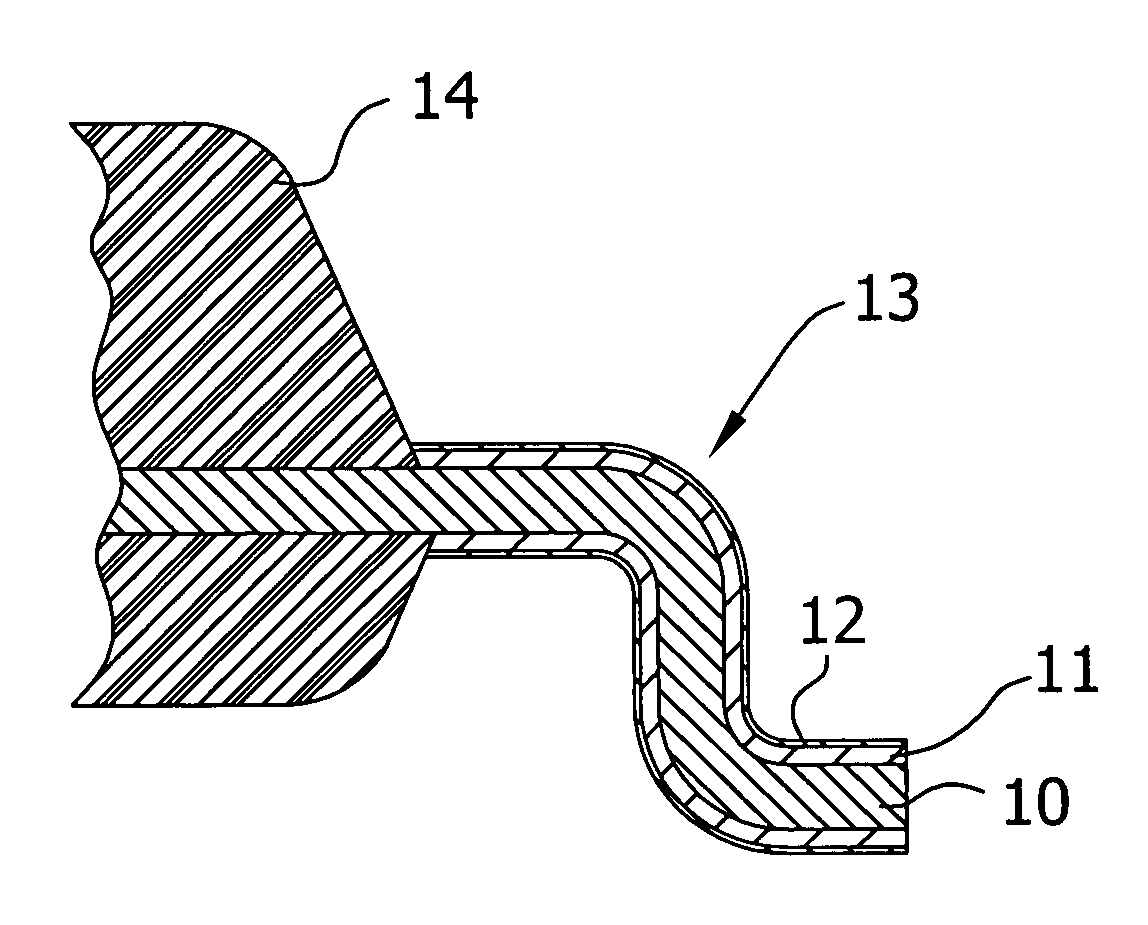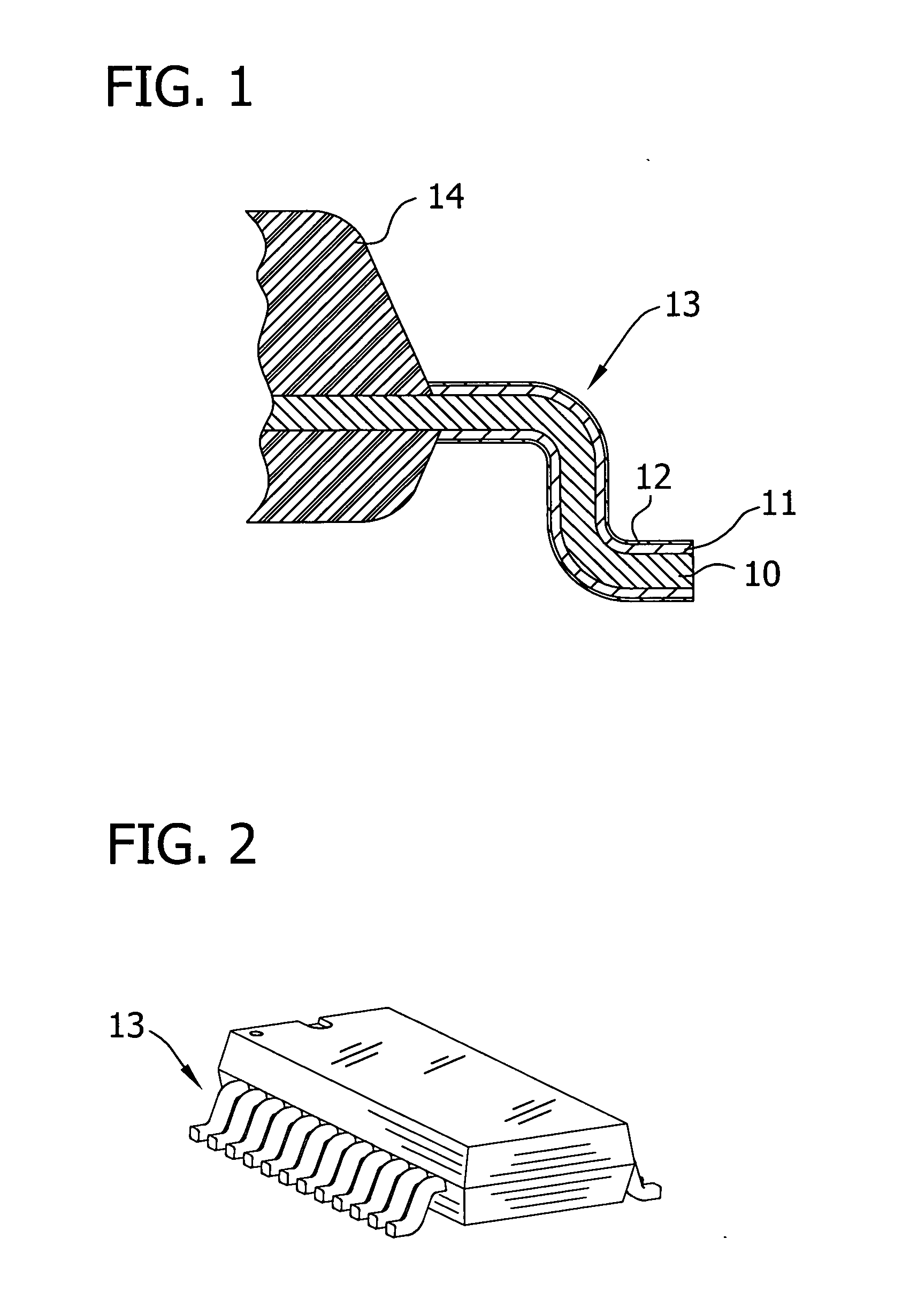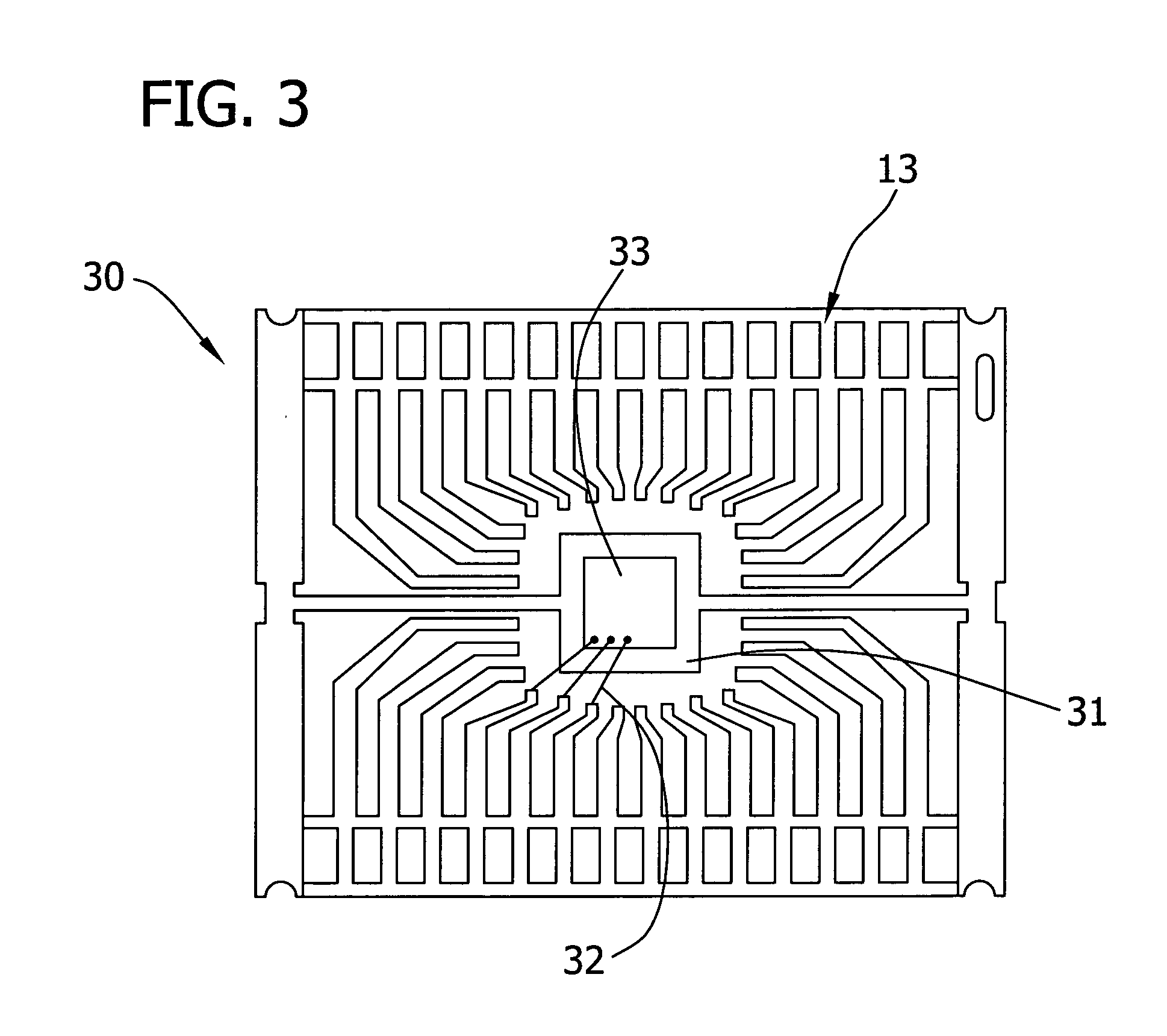Corrosion resistance enhancement of tin surfaces
a technology of corrosion resistance and tin, which is applied in the direction of printed circuit manufacturing, semiconductor/solid-state device details, coatings, etc., can solve the problems of oxide degrading the contact resistance of the coated electrical terminal, the surface and the yellowish color many consumers consider unacceptable, so as to enhance the solderability of the tin-coated surface. , to achieve the effect of imparting corrosion resistan
- Summary
- Abstract
- Description
- Claims
- Application Information
AI Technical Summary
Benefits of technology
Problems solved by technology
Method used
Image
Examples
example 1
[0033] Copper sheets having a tin-based surface thereon were immersed in three distinct compositions of the invention in a balance of deionized water for about 10 seconds: [0034] A—1.2 wt / vol % octylphosphonic acid; 22 vol % ethanol [0035] AA—1.6 wt / vol % octylphosphonic acid; 0.2 vol % ethanol [0036] AAA—1.6 wt / vol % octylphosphonic acid; 0% ethanol
[0037] These sheets, and a copper sheet with a tin-based surface thereon with no phosphorus-based composition treatment according to the invention, were exposed to steam aging under the conditions of 85 C and 85% relative humidity (RH). The samples were thereafter observed for discoloration (yellowish color) as follows, where X is the number of days until first observation of discoloration was made:
TABLE 1Discoloration test results on tin coatings.Post-treatmentDaysNo treatment 0 A88 AA73 AAA73
[0038] These results illustrate that with the method and compositions of the invention A, AA, and AAA, there was no noticeable discoloration e...
example 2
[0039] Photographs were taken of the as-plated copper sheet without the treatment of the invention, and of the copper sheet receiving the treatment of the invention with composition A by immersion for about 10 seconds. Photographs taken after 23 days of 85 C / 85% RH steam aging are presented in FIG. 5. These illustrate discoloration in the as-plated sample and no discoloration in the sample treated according to the invention.
example 3
[0040] Photographs were taken of the as-plated copper sheet without the treatment of the invention, and of the copper sheet receiving the treatment of the invention with composition A by immersion for 10 seconds. Photographs taken after 106 days of 85 C / 85% RH steam aging are presented in FIG. 6. These illustrate severe corrosion in the as-plated sample and only minor discoloration at the edges in the sample treated according to the invention.
PUM
| Property | Measurement | Unit |
|---|---|---|
| thickness | aaaaa | aaaaa |
| exposure time | aaaaa | aaaaa |
| exposure time | aaaaa | aaaaa |
Abstract
Description
Claims
Application Information
 Login to View More
Login to View More - R&D
- Intellectual Property
- Life Sciences
- Materials
- Tech Scout
- Unparalleled Data Quality
- Higher Quality Content
- 60% Fewer Hallucinations
Browse by: Latest US Patents, China's latest patents, Technical Efficacy Thesaurus, Application Domain, Technology Topic, Popular Technical Reports.
© 2025 PatSnap. All rights reserved.Legal|Privacy policy|Modern Slavery Act Transparency Statement|Sitemap|About US| Contact US: help@patsnap.com



